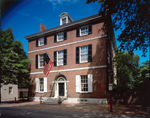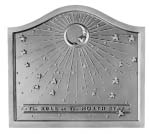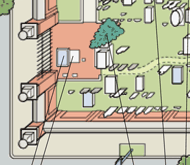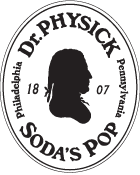

SYNG PLOT
Discovery of Stone Uncovers Syng Plot
Philadelphia Inquirer, City and Region, May 18, 2003
The1700s silversmith aided Ben Franklin in his pursuits. He was found buried with his wife and some of his children. There are no ordinary moments at a cemetery where some of the most famous figures in American history are laid to rest. This, though was truly extraordinary.
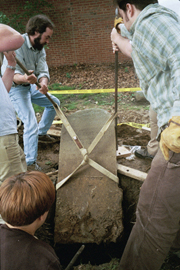
Del Conner with help raising Syng Headstone
J. Del Conner was sitting on a marble step in Christ Church Burial Ground on a sun-filled afternoon this month, studying the area where his ancestor Philip Syng Jr., revered silversmith of the 1700s, was thought to be buried.
Syng was laid to rest along the eastern edge of the cemetery, but no one knew exactly what had become of his grave marker.
And then came the moment straight out of Hollywood.
A shaft of late-afternoon sunlight penetrated the leaves overhead — and it shone straight on a jagged fragment of marble jutting up from the dirt.
Donald U. Smith, executive director of the Christ Church Preservation Trust remembers it with glee.
"Del said: 'That sure looks like writing at ground level.' We started brushing away the dirt and the name Philip appeared."
They had found the marker, they thought.
"It was unbelievable," said Conner, a sculptor and illustrator who credited his artist's eye, trained to pick up details, with the discovery.
Yet something was not quite right.
The name Philip was too close to the left edge of the stone. A book compiled in 1864 by the Christ Church warden showed that on Syng's marker, the name was centered.
Smith called conservator John Carr, executive director of the Fairmount Park Historic Preservation Trust. On May 9th, in the rain, Carr and a colleague, Jessica Baumert, dug in earnest.
More than two feet below ground, they got their answer: This was not Syng's headstone. It was the sunken vertical tablet that marked the grave of his daughter Christiana, who died on Christmas 1791, just shy of her 38th birthday Daughter of Philip and Elizabeth Syng was the snippet of inscription Conner had seen peeking above the dirt.
It was an interesting find, to be sure. Still, the question nagged: Where was Syng's headstone?
Poking up from the dirt next to the grave they now knew was Christiana Syng's was another shard of marble.
As Carr and Baurnert dug, these words came into view: and his wife Elizabeth and the bodies of seven of their children. "

Silhouette of Elizabeth Warner Syng,1714-1786
We were shocked," Smith said.
Not only had they found Syng's final resting place but they had made an important discovery: Buried with him were his wife and seven of his 13 children, a detail that had eluded, even the most assiduous chroniclers of the site.
Smith has concluded that when the gravestone inscriptions were recorded for the 1864 book, the Syng family's marker had already begun its descent into the earth, leaving only a portion above ground and leading cemetery caretakers to believe that it was Syng's grave alone. "
"In 1864, they saw one part; now, we're seeing the other part," Smith said.
The top of the stone...
lieth interred
the body of
Philip Syng
who departed this life
May 8th 1789
Aged 85 years
...has weathered away, but the part below ground that records the interment of Elizabeth Syng and their children is beautifully preserved, spared from the ravages of acid rain. "
"We had no idea that inscription was there," Conner said.
The find came at a propitious time. The silversmith's descendants had raised money for a replacement headstone. It was to be dedicated at the 300th birthday celebration this fall for Syng, who crafted the inkstand in which signers of the Declaration of Independence dipped their pens.
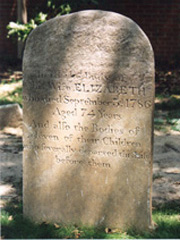
Headstone of Phiip, Elizabeth and eleven Syng Children in Christ Church Buriel Ground
On the day of the discovery, Conner was at the graveyard to discuss the new stone's design with Smith and Elizabeth A. Armour, who is helping to plan the celebration of Syng. The silversmith is credited with helping Benjamin Franklin in many important endeavors, including the founding of the Library Company of Philadelphia and the University of Pennsylvania. Now, the original stones will be raised and reset. A small plaque will give the full text of the inscriptions.
The whole thing has left Smith surprised and awed – and curious about what other surprises lie below ground at Fifth and Arch Streets.
Many early headstones in the 284-year-old cemetery on Arch Street have disappeared: sunk, stolen or thrown away. Others are so weathered they am illegible.
Guides have been instructed to look for lettering at ground level as they lead tours of the newly restored burial ground, which opened last month. after being closed to the public for a quarter-century.
"There's ground-penetrating radar that goes 2 1/2 to 3 feet into the earth that would tell us whether there are other markers buried here," Smith said. "It's a magical repository of Philadelphia history."
Julie Stoiber,
Inquirer Staff Writer
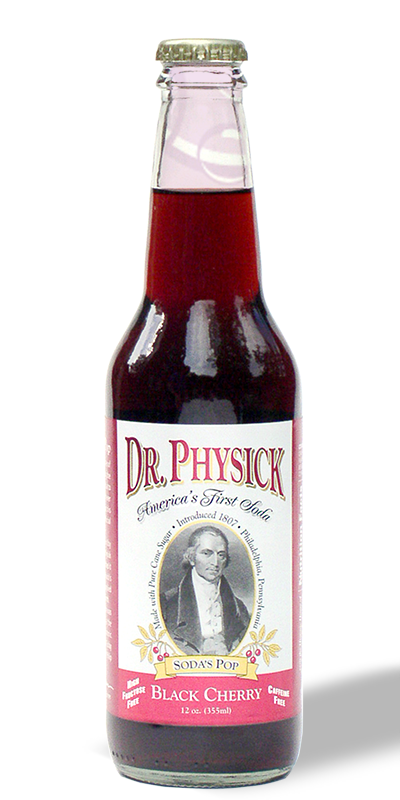

 City Tavern's Chef Walter Steib's tour of Physick House
City Tavern's Chef Walter Steib's tour of Physick House 